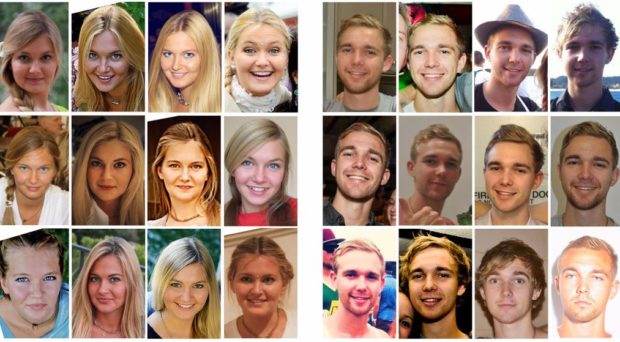
Are you one of the 1.8 billion people who use Facebook at least once a month? Maybe you’re using dating apps like Grindr/Tinder to find a partner, or browsing LinkedIn for job vacancies? If so, you probably have a profile picture on these networks, and people likely infer something about you from this.
For example, a third of employers use the internet to find information on job candidates, so jobseekers should try to appear professional on their LinkedIn profile.
Sociologist Erving Goffman’s concept of the ‘face’, a deliberately planned and performed image for others, can be applied to the practise of profile picture selection. We present ourselves in order to give the impression that we are social on Facebook, employable on LinkedIn and attractive on dating apps.
Have a look at my profile picture, next to my author bio alongside this very blog. I selected this image, a selfie, to come across favourably to you, reader. In an age of multiple digital personalities, each with subtle but important differences, an effective display image is key.
But, are we choosing the right photos for our profile images?
A study in the journal Cognitive Research attempted to answer this question. The authors focused on the process of selecting a profile picture for different social networks, comparing ‘self-selected’ profile picture with those selected by others.
Participants were asked to select images of themselves that they were most, and least, likely to use for Facebook, professional and dating sites. They then rated these images for attractiveness, trustworthiness, dominance, competence and confidence.
After this, the participants did the same thing with photographs of another participant who was a complete stranger to them. This was done in order to capture the ‘other-selection’ profile image preferences. Finally, unfamiliar viewers were recruited online to rate the images using the same scale.
The ‘self-selected’ images came out less favourably than those selected by others – i.e. participants selected more flattering profile images when they were choosing them for someone else.
One explanation for this lies in the biases that we have for pictures of our own face. We are likely to look at our faces favourably, which may hinder our ability to effectively select one image to use as a profile picture. However, the mechanism behind this selection is not clear.
One limitation of this study should be mentioned – the images viewed by participants were taken from Facebook, and had therefore likely gone through some sort of selection process already. Clearly, there is opportunity for further research to investigate the profile picture selection phenomenon.
The implications of these results are straightforward, and immediately applicable. I should probably ask someone else to choose a better picture for my BioMed Central blogs profile, and we may all benefit from the input of others when fine-tuning our online presence.
The authors put it neatly in their discussion: ‘When it comes to choosing the best version of ourselves, it may be wise to let other people choose [our profile pictures] for us’.
Comments